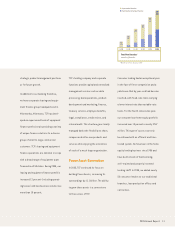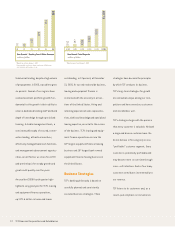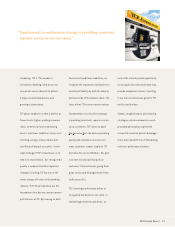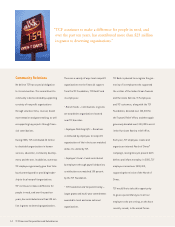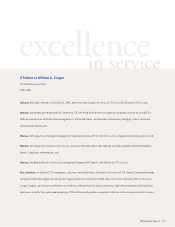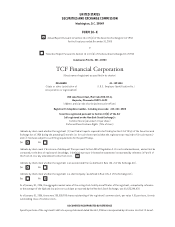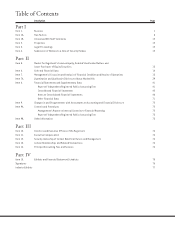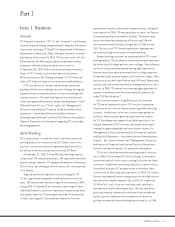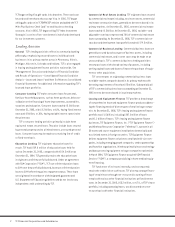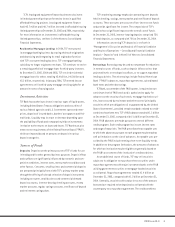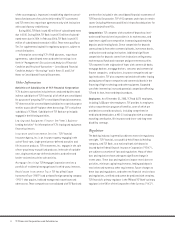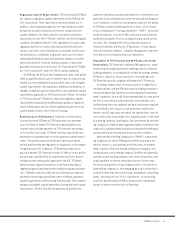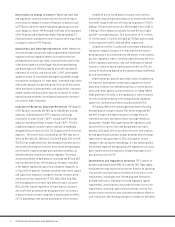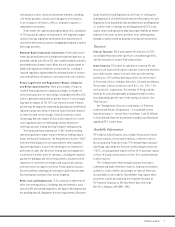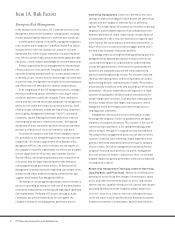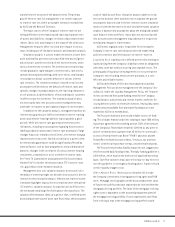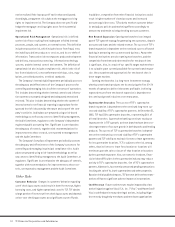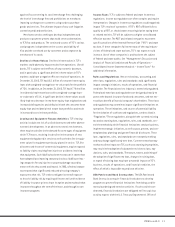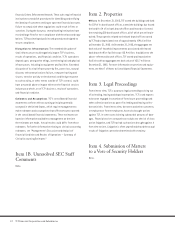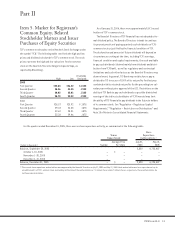TCF Bank 2005 Annual Report Download - page 23
Download and view the complete annual report
Please find page 23 of the 2005 TCF Bank annual report below. You can navigate through the pages in the report by either clicking on the pages listed below, or by using the keyword search tool below to find specific information within the annual report.
32005 Form 10-K
TCF’s leasing and equipment finance businesses also invest
in limited
partnerships that are formed to invest in qualified
affordable housing projects. Leasing and equipment finance
had $43.7 million and $46.7 million invested in affordable housing
limited partnerships at December 31, 2005 and 2004, respectively.
For more information on investments in affordable housing
limited partnerships, see Note 1 of the Notes to Consolidated
Financial Statements.
Residential Mortgage Lending In 2004, TCF restructured
its mortgage banking business by ceasing wholesale originations
and downsizing and integrating its retail origination function
with TCF’s consumer lending business. TCF’s mortgage banking
subsidiary no longer originates new loans. TCF continues to service
a remaining portfolio of mortgage loans for third-party investors.
At December 31, 2005, 2004 and 2003, TCF serviced residential
mortgage loans for others totaling $3.4 billion, $4.5 billion and
$5.1 billion, respectively. In January 2006, TCF entered into an
agreement to sell its third-party mortgage servicing rights for an
amount in excess of carrying value.
Investment Activities
TCF Bank has authority to invest in various types of liquid assets,
including United States Treasury obligations and securities of
various federal agencies and U.S. Government sponsored enter-
prises, deposits of insured banks, bankers’ acceptances and fed-
eral funds. Liquidity may increase or decrease depending upon
the availability of funds and comparative yields on investments
in relation to the returns on loans and leases. TCF Bank must also
meet reserve requirements of the Federal Reserve Board (“FRB”),
which are imposed based on amounts on deposit in various
deposit categories.
Sources of Funds
Deposits Deposits are the primary source of TCF’s funds for use
in lending and for other general business purposes. Deposit inflows
and outflows are significantly influenced by economic and com-
petitive conditions, interest rates, money market conditions and
other factors. Consumer, small business and commercial deposits
are attracted principally from within TCF’s primary market areas
through the offering of a broad selection of deposit instruments
including consumer, small business and commercial demand
deposit accounts, interest-bearing checking accounts, money
market accounts, regular savings accounts, certificates of deposit
and retirement savings plans.
TCF’s marketing strategy emphasizes attracting core deposits
held in checking, savings, money market and certificate of deposit
accounts. These accounts are a source of low-interest cost funds
and provide significant fee income. The composition of TCF’s
deposits has a significant impact on the overall cost of funds.
At December 31, 2005, interest-bearing deposits comprised 73%
of total deposits, as compared with 70% at December 31, 2004.
Information concerning TCF’s deposits is set forth in
“Management’s Discussion and Analysis of Financial Condition
and Results of Operations — Consolidated Financial Condition
Analysis – Deposits” and in Note 10 of Notes to Consolidated
Financial Statements.
Borrowings Borrowings may be used to compensate for reductions
in normal sources of funds, such as deposit inflows at less than
projected levels or net deposit outflows, or to support expanded
lending activities. These borrowings include Federal Home Loan
Bank (“FHLB”) advances, repurchase agreements, subordinated
bank notes and other borrowings.
TCF Bank, as a member of the FHLB system, is required to own
a minimum level of FHLB stock and is authorized to apply for
advances on the security of such stock, mortgage-backed securi-
ties, loans secured by real estate and other assets (principally
securities which are obligations of, or guaranteed by, the United
States Government), provided certain standards related to credit-
worthiness have been met. TCF’s FHLB advances totaled $1.1 billion
at December 31, 2005, compared with $1.6 billion at December 31,
2004. FHLB advances are made pursuant to several different
credit programs. Each credit program has its own interest rates
and range of maturities. The FHLB prescribes the acceptable uses
to which the advances pursuant to each program may be made as
well as limitations on the size of advances. Acceptable uses pre-
scribed by the FHLB include meeting short-term liquidity needs.
In addition to the program limitations, the amounts of advances
for which an institution may be eligible are generally based on
the FHLB’s assessment of the institution’s creditworthiness.
As an additional source of funds, TCF may sell securities
subject to its obligation to repurchase these securities under
repurchase agreements with major investment banks or the FHLB
utilizing government securities or mortgage-backed securities
as collateral. Repurchase agreements totaled $1.4 billion at
December 31, 2005, compared with $1.2 billion at December 31,
2004. Generally, securities with a value in excess of the amount
borrowed are required to be deposited as collateral with the
counterparty to a repurchase agreement. The creditworthiness


